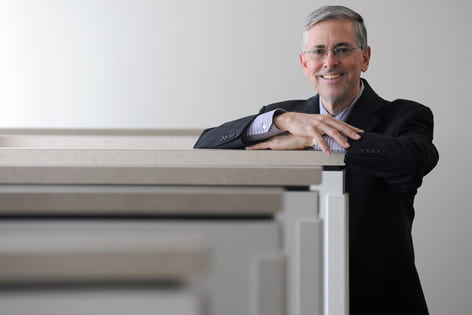‘Science of team science’ revealed
Scientists and policymakers generally agree that solving the world’s most challenging social and public health problems – AIDS, climate change, cancer, obesity and global terrorism among them – requires collaboration among researchers across a variety of fields.

Scientists and policymakers generally agree that solving the world’s most challenging social and public health problems – AIDS, climate change, cancer, obesity and global terrorism among them – requires collaboration among researchers across a variety of fields.
Agencies such as the National Institutes of Health and the Centers for Disease Control & Prevention pour millions into interdisciplinary research projects every year. But due to the high cost and logistical complications of “team science” initiatives, some are now questioning whether scientists working by themselves couldn’t achieve the same results.
What factors do contribute to successful interdisciplinary research efforts? And how can we tell when a team approach will be the most effective?
UC Irvine social ecology professor Daniel Stokols is on the forefront of a new branch of study – the science of team science – that seeks answers to these questions. He recently identified key factors that help or hinder collaboration and reported on them in a special supplement, “The Science of Team Science: Assessing the Value of Transdisciplinary Research” in the American Journal of Preventive Medicine.
“Team dynamics, intellectual and leadership issues, and personality differences all affect the success of interdisciplinary research projects,” Stokols said. “Researchers are under pressure to produce evidence that these large-scale initiatives are cost effective and justifiable compared to smaller, single discipline-based projects.”
Producing such evidence in a scientific way means developing an analytical structure that can be replicated. Stokols and others studying team science are first defining key terminology. For example, there are differences between interdisciplinary teams, where researchers work collaboratively but draw on their individual expertise, and transdisciplinary teams, where team members develop a shared conceptual framework that transcends specific disciplines.
Along with defining terms, Stokols and colleagues are developing theoretical models to account for why teams are more or less effective. Factors range from leadership style, commitment and institutional support to tangibles such as shared work areas and ease of communication by e-mail and phone.
Taking these factors into account, Stokols has found that small-scale unidisciplinary projects are sometimes more likely to succeed and, in those cases, the much-touted transdisciplinary approach may not be warranted.
However, when large-scale team projects work well, he says, results can transcend science and lead to pervasive and positive impacts on society. Discoveries such as the structure of DNA, magnetic resonance imaging technology, laser eye surgery and manned space flight are examples of developments made possible by team science.
Interdisciplinary research has always been a part of UCI’s educational philosophy, according to Stokols. Team science efforts currently under way include developing healthy alternatives to consumer products containing toxic materials, combating bioterrorism threats and emerging infectious disease, and water use and conservation in drought-prone regions of the American southwest.
UCI’s Beckman Center is home to the National Academies Keck Futures Initiative, which aims to break down barriers to interdisciplinary research. Coordinator Anne Heberger says universities should work to create environments that support team science because some problems require this type of collaboration among scientists from different worlds.
“Interdisciplinarity plays an essential role in permitting researchers to venture beyond the frontiers of their own disciplines and address questions of ever-increasing complexity and social urgency,” she said.
The pressure on researchers and institutions is to justify the cost effectiveness of team science initiatives, which are under greater scrutiny than in the past over expenses and results. Stokols’ research can serve as a guide to those decision makers, he said.
“Ultimately, investments in team science and training must become more strategic and cost effective in the years to come,” Stokols said. “In light of budget cuts and resource shortages, it is important that the research directly impact health and environmental problems at national and global levels.”
